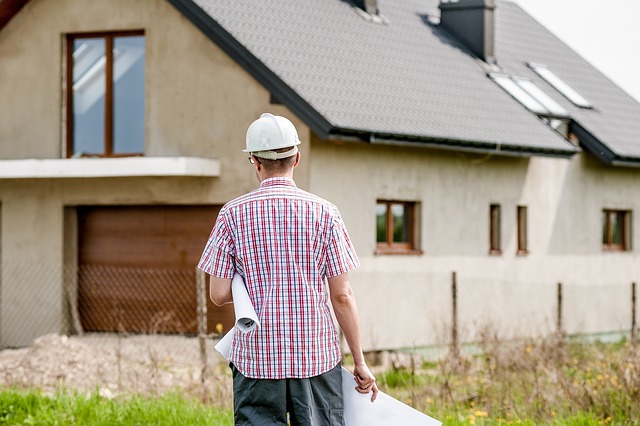Regular and comprehensive home assessments are critical for maintaining a safe, efficient, and comfortable living space. These assessments identify potential issues early on, allowing for prompt repairs that prevent more severe problems and costly fixes later. A detailed inspection of the home's structure, systems, and components by a certified inspector using specialized equipment ensures awareness of the property's condition and repair needs. Engaging in regular checks and fixes of common issues such as leaky faucets, electrical system updates, and insulation deficiencies extends the lifespan of your home and conserves resources like water and electricity, supporting sustainable living and reducing carbon emissions. A focus on home repair and maintenance underpins the longevity and value of your property while ensuring a secure and healthy environment for you and your family. It's a strategic investment that ensures your home operates efficiently and safely, with long-term benefits that contribute positively to your well-being and financial planning. Regular upkeep under 'Home Repair And Maintenance' is not just about addressing visible problems but also about safeguarding your home against future issues.
Homeowners who prioritize regular home repair and maintenance not only enhance their living environment but also contribute to sustainable living practices. This article delves into the significance of these practices through a comprehensive examination of home assessments, which are pivotal in identifying necessary repairs. We’ll explore the key components of a thorough assessment, essential for informed maintenance planning, and offer strategies grounded in professional evaluations to ensure your home remains in top condition. Join us as we navigate the intersection of home repair and sustainability.
- Understanding the Importance of Home Repair and Maintenance for Sustainable Living
- The Role of Comprehensive Home Assessments in Identifying Repair Needs
- Key Elements to Include in a Thorough Home Assessment for Optimal Maintenance Planning
- Strategies for Effective Home Repair and Maintenance Based on Professional Assessments
Understanding the Importance of Home Repair and Maintenance for Sustainable Living

Regular home repair and maintenance are integral practices for sustaining a safe, comfortable, and energy-efficient living environment. These practices extend the lifespan of a home, prevent costly repairs, and preserve its aesthetic value. By proactively addressing issues such as leaky faucets, faulty electrical systems, or worn-out insulation, homeowners can mitigate the risk of more significant problems that may arise from neglect. Moreover, efficient maintenance helps in conserving resources like water and energy, contributing to a reduced carbon footprint and alignment with sustainable living principles. Routine checks for structural integrity, roof condition, plumbing functionality, and HVAC performance ensure that a home remains a healthy habitat for its inhabitants. Investing in ongoing upkeep not only enhances the longevity of the property but also fosters a harmonious environment where occupants can thrive with peace of mind, knowing their living space is well-maintained and secure. Home repair and maintenance, therefore, are pivotal actions that homeowners should prioritize for both the immediate and long-term benefits they offer to the home’s functionality and the residents’ well-being.
The Role of Comprehensive Home Assessments in Identifying Repair Needs

Homeowners and property managers can benefit significantly from the meticulous process of comprehensive home assessments to ascertain current repair needs and prevent future ones. These evaluations encompass a thorough inspection of the structure, systems, and components that constitute a dwelling. By identifying issues such as worn-out plumbing fixtures, electrical system inefficiencies, or structural weaknesses, homeowners can prioritize maintenance tasks under ‘Home Repair And Maintenance’ to safeguard their property’s integrity and longevity. The assessment process typically involves a certified inspector conducting a visual examination of the property, both interior and exterior, and possibly utilizing specialized equipment for a more in-depth analysis. This approach helps homeowners understand the full scope of necessary repairs, offering clarity on the condition of their home. It also serves as a strategic tool for budgeting, as it provides a comprehensive list of required maintenance work with associated costs. By addressing these needs proactively, homeowners can avoid more costly repairs down the line and maintain a safe, efficient living environment. Regular assessments under the umbrella of ‘Home Repair And Maintenance’ are crucial for maintaining property value and ensuring that the home remains a comfortable and functional space for its occupants.
Key Elements to Include in a Thorough Home Assessment for Optimal Maintenance Planning

A thorough home assessment is a critical step in maintaining the safety, efficiency, and longevity of your residence. To ensure optimal maintenance planning, a comprehensive evaluation should cover several key elements. Firstly, a detailed examination of the property’s structure is essential, including the foundation, walls, roof, and all external components. This assessment should identify any signs of wear, damage, or potential issues such as water intrusion or structural instability, which can be addressed through home repair and maintenance. Additionally, the assessment should include an inspection of all systems within the home, notably the plumbing, electrical, heating, ventilation, and air conditioning (HVAC) systems. Each component must be evaluated for functionality, efficiency, and compliance with current safety standards. The evaluation should also account for the age and condition of major appliances, as their maintenance or replacement can significantly impact your home’s operational performance and energy costs.
Furthermore, a comprehensive home assessment should consider the home’s interior and exterior finishes, including painting, flooring, countertops, and other aesthetic elements. These finishes not only affect the home’s appearance but also its overall condition. Regular maintenance of these elements can prevent costly repairs down the line. Insulation and energy efficiency assessments are equally important, as they contribute to the home’s comfort and energy consumption. Identifying areas where insulation is lacking or ineffective allows for targeted improvements that can lead to lower utility bills and a more comfortable living environment. Lastly, a complete home assessment should include a review of the property’s landscaping and drainage systems to ensure they support the home’s integrity and promote its longevity. Regular maintenance of these outdoor elements can prevent water intrusion issues and enhance the curb appeal of your home. By incorporating these key elements into a thorough home assessment, homeowners can effectively plan for ongoing repair and maintenance needs, safeguarding their investment and ensuring a safe and comfortable living space.
Strategies for Effective Home Repair and Maintenance Based on Professional Assessments

Engaging in proactive home repair and maintenance is a prudent approach to preserving the integrity and functionality of your living space. Professional assessments play a crucial role in identifying potential issues before they escalate into costly repairs. These evaluations can pinpoint areas in need of immediate attention, such as leaking pipes, outdated electrical systems, or roof damage that could compromise the safety and comfort of your home. By leveraging the expertise of seasoned inspectors, homeowners can benefit from a tailored maintenance plan that addresses specific vulnerabilities. This plan often includes routine inspections and preventative measures to extend the lifespan of various home components, ensuring they operate efficiently and safely. For instance, regular HVAC system checks can optimize energy efficiency, reduce wear and tear, and mitigate the risk of unexpected breakdowns. Similarly, assessments can guide homeowners in prioritizing renovations or upgrades that enhance both the value and longevity of their property. By following a structured approach based on professional recommendations, home repair and maintenance becomes not just a reactive task but a strategic investment towards a sustainable and secure living environment.
Homeowners who prioritize regular repair and maintenance not only enhance the longevity of their dwelling but also contribute to sustainable living. A thorough home assessment is pivotal in pinpointing necessary repairs, enabling proactive rather than reactive management. By integrating key elements such as structural integrity inspection, system functionality evaluation, and energy efficiency analysis during these assessments, homeowners can develop a maintenance plan that aligns with professional recommendations for optimal upkeep. Adopting strategies derived from these evaluations ensures that homes remain safe, efficient, and comfortable. In essence, embracing comprehensive home assessments is essential for informed decision-making in home repair and maintenance, underscoring the commitment to a sustainable and healthy living environment.
